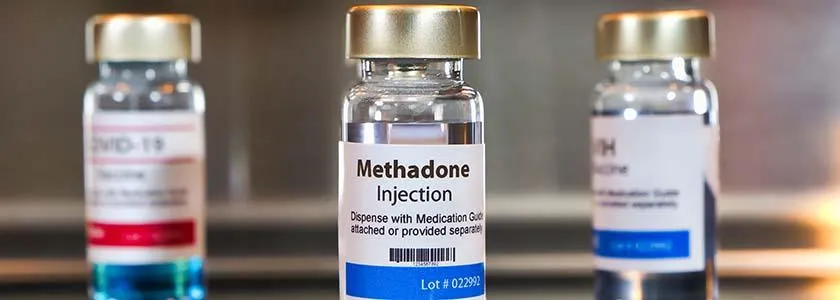On Cracking Addiction this week
Legacy patients on high dose opioids or on combination hypno-sedatives including the combination of opioids and benzodiazepines are at an elevated risk of death. The OPQRST mnemonic can be used to conceptualise the strategies that help to mitigate legacy patients’ risk of death and to trend them towards a position of safer prescribing.
Opioid antagonist therapy.
Opioid antagonist therapy in the form of naloxone is available as “Narcan” vials, “Prenoxad” prefilled syringes and as “Nyxoid” nasal spray.
The Pennington institute’s community overdose prevention education program (COPE) provides useful resources and advice regarding the use of naloxone in the management of accidental opioid overdose. It should at this point be stated that naloxone therapy should not be reserved for patients with opioid substance use disorders, but rather should be a widely available therapy for all patients who are at risk of opioid overdose.
Regarding this point, Jauncey and Nielson stated in their 2017 paper that “Regardless of whether opioid use is licit or illicit, anyone at risk of opioid overdose should be considered for naloxone.” It is the author’s opinion therefore, that any patient who is prescribed a total opioid load of more than 50 mg oral morphine equivalent per day should be prescribed naloxone and that they and their carers should be provided with training on its use.
Pharmacotherapy
Suboxone pharmacotherapy can be considered as one option for the treatment of those patients on high dose prescription opioids who meet the diagnostic criteria for an opioid use disorder as defined DSM 5. The distinction needs to be made between physiological dependence and opioid use disorder. Any patient on long term prescribed opioids has the potential to become physiologically dependent on their opioid medication and can therefore present to their clinician requesting higher doses of opioids to treat an apparently worsening pain.
This group of patients can be dealt with by various interventions including a reassessment of underlying medical conditions, alternative pain management interventions (pharmacological or otherwise) opioid rotation or opioid tapering (if deemed appropriate). They must also be distinguished from those patients who present with aberrant behaviours. Such behaviours have been extensively described and include the following.
• Medically unsanctioned use of prescription medication including use of higher doses, unsanctioned indications (non-pain indications e.g. a “bad day”) and unsanctioned routes of ingestion (e.g. snorting or injecting crushed tablets)
• Prescription forgery
• Selling medication
• Doctor shopping
Patents who demonstrate aberrant behaviours with regard to their prescription opioids should be considered for long term pharmacotherapy either with methadone or buprenorphine (with or without naloxone). Each state in Australia has its own rules and regulations regarding the accreditation of clinicians to provide pharmacotherapy and it behoves clinicians to consider their own local requirements before prescribing pharmacotherapy.
Quantity: reduced
It is not mandatory to prescribe quantities as per the original pack size. Smaller quantities of medication should be prescribed per prescription by clinicians who are concerned about the supply of hypno-sedative drugs to their patients.
Referral
Referrals to allied health practitioners and or psychologists should be encouraged as part of a multimodal system of chronic pain management in which the provision of psychological and physical therapies supersede the emphasis on prescribing.
Rotation of opioids
Opioid rotation provides a rapid and effective means of reducing the total daily oral morphine equivalent (OME) daily dose. For patients on more than 100 mg OME, opioid rotation can be used to rapidly reduce the OME to less than 100 mg. It relies on the fact that patients do not usually demonstrate cross tolerance between opioids so converting a patient from one opioid to another necessitates a reduction in dose of the second opioid to approximately fifty percent of the equivalent dose of the first opioid. For instance, if a patient has been prescribed 60 mg b.d. of “Targin” this equates to approximately 200 mg OME. If the patient were to be transferred to 200 mg daily of a long acting morphine, e.g. “MS Contin” or “Kapanol” the patient would likely suffer an overdose because of the lack of cross tolerance between opioids. Therefore, as per the usual practice of only prescribing 50% of the calculated OME for the second opioid, the patient should be started on only 100 mg daily of long acting morphine. It can be seen in this example that converting from oxycodone to morphine has reduced the overall OME from 200 mg to 100 mg. A reduction in OME is an important step in trending the legacy patient to a position of reduced risk of death.
Staged supply
Staged supply denotes the practice of requiring that a patient attend a pharmacy or other dosing point on a regular basis to receive a daily dose of the medication in question. Clinicians can arrange staged supply of any drug, not just Suboxone or methadone. Therefore, staged supply of opioids would be entirely reasonable as part of a plan to manage high dose or high-risk opioid prescribing.
Tapering of opioids
Patients can be weaned off high doses of opioids by gradually reducing their dose over weeks to months. This process, called tapering, is usually done in conjunction with opioid rotation.
The process of tapering involves the following steps.
• The daily dose of short acting opioids is incorporated into a long acting dose of equivalent opioid.
• If multiple opioid combinations are used, then all opioids are converted into an oral morphine equivalent and an opioid rotation is performed as described above.
• One long acting opioid is commenced
• The taper starts at a rate of approximately ten percent per week of the original starting dose
• The use of short acting opioids or prn doses is strictly limited.
The recommended taper rate is a reduction of ten per cent of the original dose of opioid per week or fortnight such that over a period of ten to twenty weeks patients can be completely weaned off their opioids if appropriate or otherwise weaned down to a dose of less than 100 mg OME.












